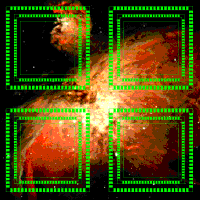

|
Documentation
Observing Resources
Image and Photo Gallery |
Projects Las Campanas IR Survey(LCIRS), Gravitational Lensing, ....
Publications
Specifications
Technical Resources |

|
The Institute of Astronomy has been particularly fortunate in being given a substantial donation for the development of new instruments, as part of the Cambridge Deep Sky Initiative. CIRSI is the first instrument to be developed with the money from the donation. We are all extremely grateful to Raymond and Beverly Sackler for their generosity. |
| CIRSI is a panoramic wide-field near-infrared imaging camera which uses four Rockwell HgCdTe 10242 detectors. The survey instrument is as scientifically versatile and as easy to use as a large format CCD camera, and is particularly well-suited for surveys of star-forming regions, low mass stars, distant galaxies, clusters and QSOs. First light was in December 1997 at the Isaac Newton Telescope. A copy of the Critical Design Review held in July 1996, and a summary of progress to the start of March 1997 are available. |

|
|
The CIRSI Project team consists of Dr. Richard McMahon (Project Scientist), Dr. Craig Mackay (Project Manager), Dr. Chris Sabbey (Instrument Support Scientist), Mr. Michael Hoenig (Graduate Student), and Mr. Andrew Firth (Graduate Student), with support from the rest of the IoA Instrumentation Group, previous team members, and others. |
| 09 August 2000 |